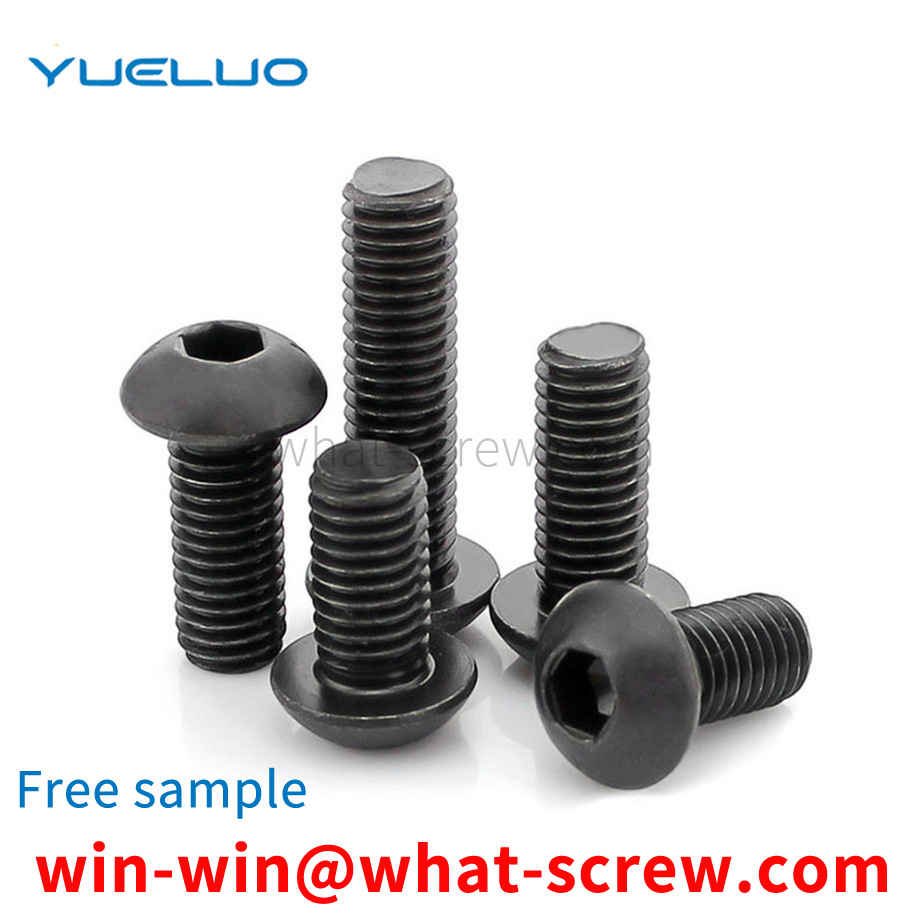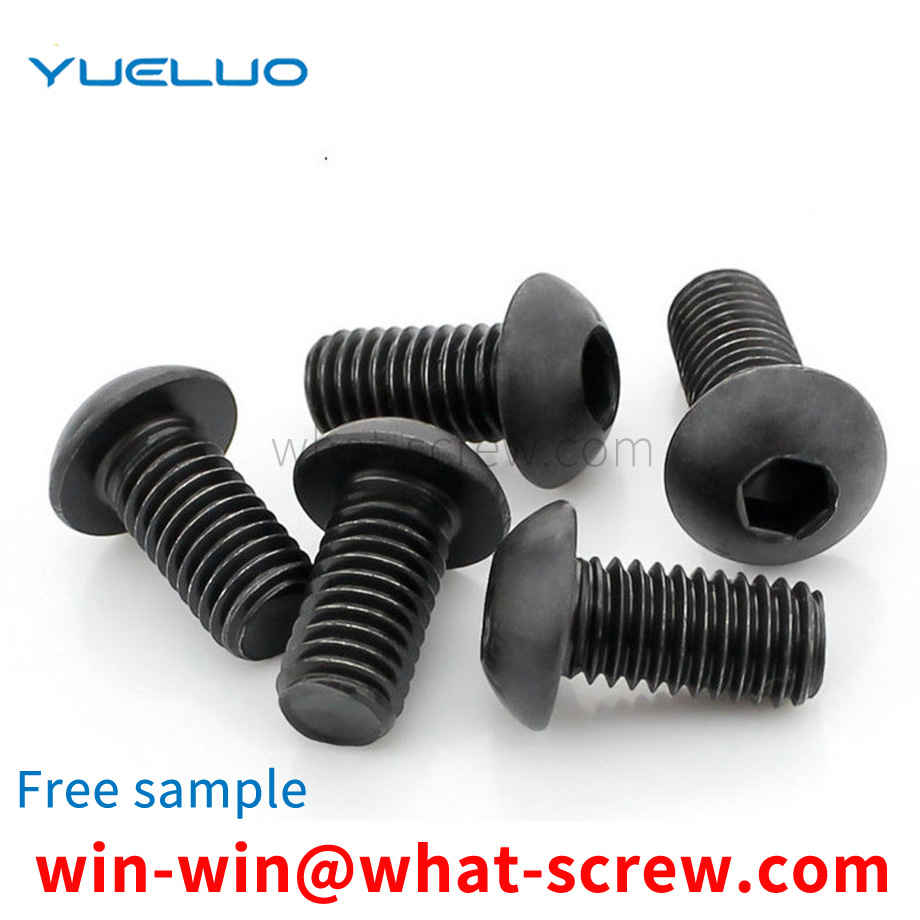Stud bolts generally need to be surface treated. There are many types of bolt surface treatments. Generally, electroplating, blackening, oxidation, phosphating, and electroless zinc flake coating are commonly used. However, electroplated fasteners account for a large proportion of the actual use of fasteners. Especially in automobiles, tractors, home appliances, instrumentation, aerospace, communications and other industries and fields are more widely used. However, for threaded fasteners, not only a certain anti-corrosion capability is required in use, but also the interchangeability of threads must be ensured, which can also be called screwability here. In order to meet the dual-use performance of anti-corrosion and interchangeability required by threaded fasteners in use, it is very necessary to formulate special plating standards. [1] The GB/T5267.1-2002 [Threaded Fastener Electroplating Coating] standard is one of the national standards Fastener Surface Treatment series of standards, which include: GB/T5267.1-2002 [Fastener Electroplating Layer]; GB/T5267.2-2002 [Fastener electroless zinc flake coating] two standards. This standard is equivalent to the international standard ISO4042; 1999 [Threaded fastener electroplating layer]. This standard replaces the GB/T5267-1985 [Threaded Fastener Electroplating Coating] standard.
Make further details to make the technical scheme of Guangdong Yueluo Hardware Industry Co., Ltd. easier to understand and master. As shown in Figure 1, Yueluo is a schematic diagram of the thread design structure of the plastic screw of Guangdong Yueluo Hardware Industry Co., Ltd. It can be seen from the figure that this creation mainly controls the tooth angle of the thread. Compared with the normal tooth angle of many self-tapping screws, which are 48 degrees, 60 degrees and 34.5 degrees, the tooth angle of Guangdong Yueluo Hardware Industry Co., Ltd. The profile angle is formed by a 30-degree asymmetrical thread I. In particular, the asymmetrical thread I has a forward thread angle greater than the reverse thread angle. A more preferred embodiment is an asymmetric thread. The tooth profile angle α of the in-line installation is 20 degrees, and the tooth profile angle β of the reverse installation is 10 degrees. With this narrower non-stacked thread, the radial pressure on the plastic material is effectively reduced. In addition, the connecting bottom surface 11 between the screw teeth is designed as a circular arc surface. In the process of forming the self-tapping thread, it is more conducive to the flow of the material and the formation of the thread, and at the same time, the material can be more closely matched with the screw. Moreover, the radial pressure of the casing is relatively uniform, and the formed threads are not easily damaged. Yueluo has been tested by a series of professional parameters. Compared with other traditional screws, the plastic screws designed by Guangdong Yueluo Hardware Industry Co., Ltd. have better radial pressure, shell deformation after installation, load distribution, installation torque, drawing The force distribution, the strength of the pull-out force and the mounting torque range all show advantages. In particular, it can be installed with less torque to achieve the same clamping force and pulling force. Compared with a specific parameter, the thread strength of Delta-PT is 387N, while the thread strength of Guangdong Yueluo Hardware Industry Co., Ltd. reaches 452N. Yueluo can understand the plastic screw structure and implementation of Guangdong Yueluo Hardware Industry Co., Ltd. detailed above. It can be understood that through the improvement of the special thread structure, the radial pressure and installation torque during screw installation are reduced, and the damage to the plastic hole is reduced; And the pull-out resistance of the screw is increased, and it is not easy to appear loose in the assembly. At the same time, the design of the bottom surface of the connection between the threads of the arc optimizes the flow of the material of the installation object, which improves the integrity of the installation connection.
Many customers ask what is the difference between a rivet nut and a rivet nut, and how to use it? Let's take a look at the difference between a rivet nut and a rivet nut with Yueluo. First of all, in terms of appearance, you can look at the differences in appearance. In terms of appearance, the difference between the rivet nut and the pressure rivet nut is still very big, but their main functions are almost the same. They all provide threads for thin plates, but the way of installation is different. The method of installation greatly determines the purpose and use of a nut. First of all, the installation method of the riveting nut is to use the riveting equipment to carry out the riveting, so it is suitable for use in the place where the riveting is not easy for the square tube and the round tube. The rivet nut also makes up for some of the shortcomings of electric welding, such as aesthetics, and places that are not easy to weld, such as thin plates.
Due to manufacturing and installation errors, the lamp head and its connecting part of the shadowless lamp will drift, which cannot be positioned at any position. Therefore, in the shadowless lamp, the damping force is usually provided by the damping screw to realize the positioning of the lamp cap and its connecting part. The damping screw needs to be able to provide a suitable damping force. The damping force should not be too small to meet the positioning requirements; at the same time, the damping force should not be too large to make the user feel comfortable when moving the lamp head and its connecting parts. In addition, within the normal life range, after the damping screw is worn, it should also be able to provide sufficient damping force to satisfy the positioning of the lamp cap and its connecting part. The damping screw is tightened by the thread, the top pressure disc spring is deformed, and the disc spring presses the friction end to generate frictional force, thereby providing an effective and lasting damping force. The damping force can be realized by adjusting the screw tightness. For the friction ends, there are certain requirements for wear resistance, certain self-lubrication, certain strength, hardness and toughness. At present, the friction end materials in the industry mainly include metals such as brass and tin bronze; non-metals such as nylon and POM. At present, the main disadvantage of the friction end of the damping screw is that it is easy to produce abnormal noise during the friction process for metal materials. For non-metallic materials, deformation is easy to occur and the strength is insufficient.
Screws are a common fastener widely used in machinery, electrical appliances and buildings. The general material is metal or plastic, it is cylindrical, and the grooves engraved on the surface are called threads. Due to the different units of measurement, the representation methods of various threads are also different. For example, M16-2X60 represents a metric thread. His specific meaning is that the nominal diameter of the screw is 16MM, the pitch is 2MM, and the length is 60MM. Another example: 1/4—20X3/4 means the inch thread, what he specifically means is the nominal diameter of the screw It is 1/4 inch (one inch = 25.4MM), there are 20 teeth on one inch, and the length is 3/4 inch. In addition, if you want to express American screws, UNC and UNF are usually added to the back of the British screws to distinguish between American coarse teeth or American fine teeth.
We have many years of experience in the production and sales of screws, nuts, flat washers, etc. The main products are: BS2696 bolts, 2 half-tooth screws, half-circle hexagon socket screws, carbon galvanized screws and other products, we can provide you with suitable products for you. Fastener Solutions.



















 Service Hotline
Service Hotline




